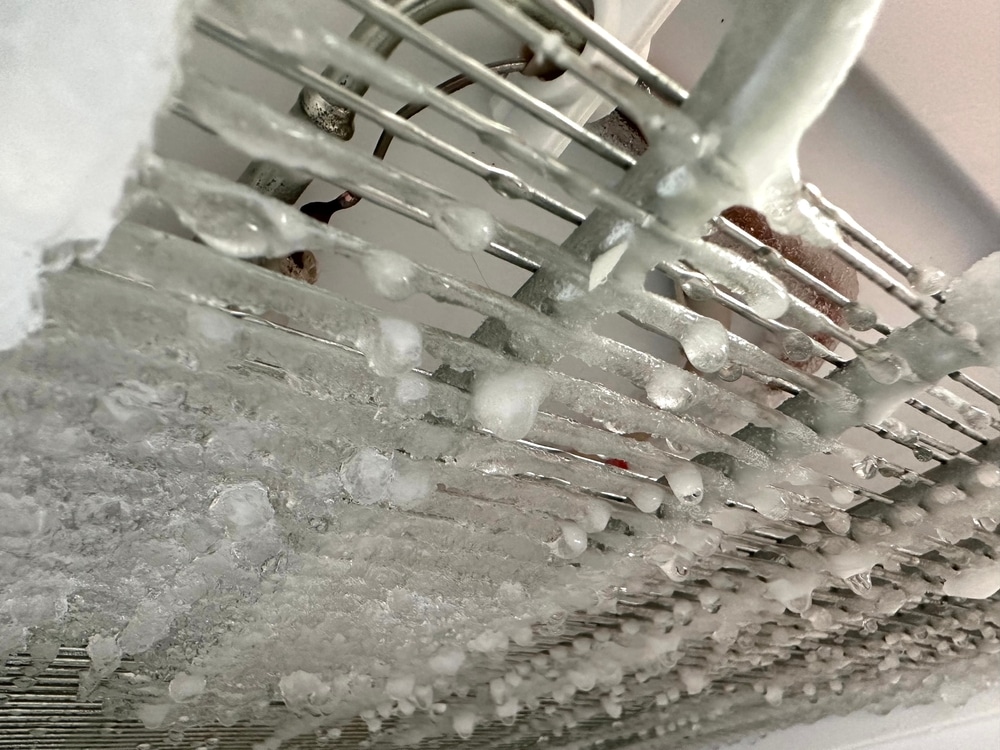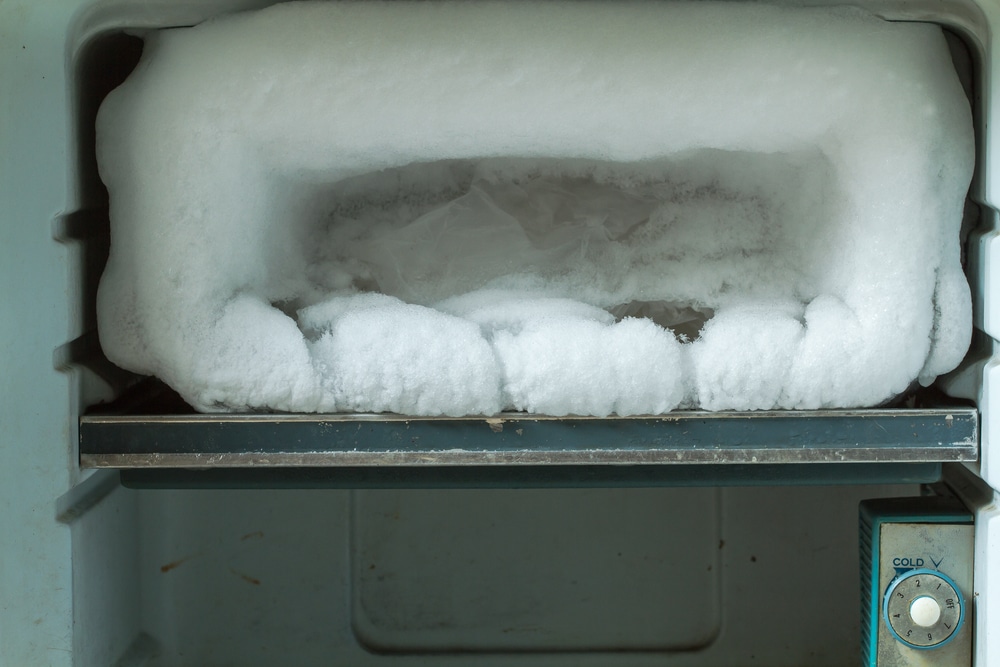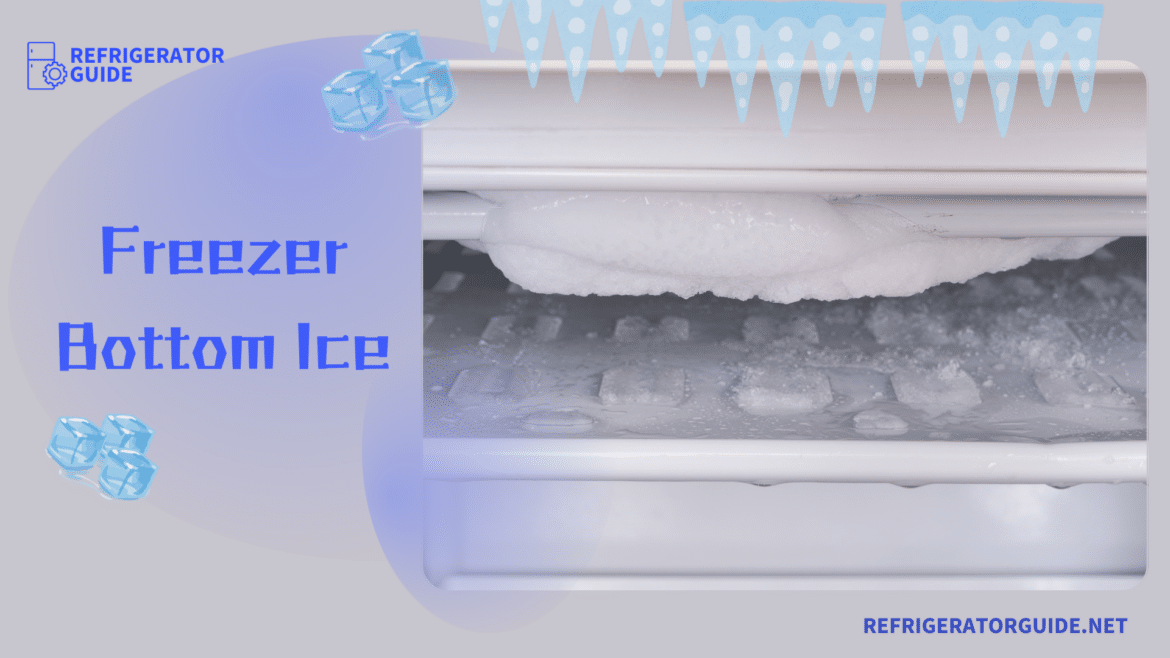Table of Contents
Ah, the feeling of getting that icy cold drink out of your freezer and sipping on it. Sounds amazing in this sweltering heat. But OH NO! Is your refrigerator frosting up again? More specifically, frosting up at the bottom? Now, there could be several reasons leading to the freezer bottom ice. A typical problem that can be frustrating and have an impact on food storage is ice building at the bottom of your freezer. It typically occurs in both refrigerator-freezers and freestanding freezers and, if ignored, could cause harm. Early action guarantees food preservation and avoids more problems. Maintaining the smooth operation of your freezer may be achieved by comprehending the causes, implementing fast fixes, and following preventative tips. Let us discover and go to the BOTTOM of this issue to find out!
Why Does Freezer Keep Icing Up at the Bottom?
You may have heard that your freezer is generally frosting up or making certain faulty noises. However, have you ever wondered why it frosts the bottom? There are a number of reasons why ice accumulates at the bottom of the freezer, but fixing the underlying problem guarantees a permanent solution.
- Drain Tube Blockage: A clogged tube causes water to pool and freeze, forming a sheet of ice.
- Faulty Door Seal: Warm air leaks in, leading to frost buildup.
- Improper Defrosting: When the defrost system fails, water accumulating and refreezes at the bottom.
- Overloading: Excess items block airflow, causing uneven cooling and ice buildup.
- High Humidity: Moisture in the air condenses, forming ice in the freezer’s bottom.
Using tools like a turkey baster to clear the drain tube can help solve the problem. Prevent future issues by checking the door seal, avoiding overpacking, and monitoring humidity levels.

Signs of Ice Buildup in the Freezer or Fridge
Detecting ice buildup early can prevent further issues, such as spoiled food or damaged freezer components. Look out for these signs;
- Sheet of Ice on the Bottom: A thin or thick layer of ice may form across the freezer floor.
- Frost Build-up Around the Drain Area: This could indicate a blocked drain tube.
- Ice Accumulating Around Stored Items: Frost clinging to food containers or shelves is a sign of excess moisture.
- Difficulty Opening the Door: Ice buildup can interfere with the door’s ability to seal properly.
- Reduced Cooling Efficiency: If the freezer struggles to keep food frozen, it may be due to blocked airflow caused by ice.
How to Fix Ice Buildup on the Bottom?
If you see a sheet of ice or frost build-up on the bottom of your freezer, follow these steps to address the issue;
- Turn off the Freezer: Unplug the unit to avoid electric shocks.
- Remove all Food Items: Store perishable items in a cooler or fridge temporarily.
- Melt the Ice: Use a turkey baster filled with warm water to melt ice around the drain tube or frost-covered areas. Alternatively, place a bowl of hot water in the freezer to speed up the defrosting process.
- Clear the Drain Tube: Check if the drain tube is clogged with debris or frozen water. Use a turkey baster or pipe cleaner to remove blockages.
- Wipe Away Moisture: After the ice melts, dry the freezer thoroughly to prevent further buildup.

The Bottom Line!
Summing up, finding the source of the ice at the bottom of the freezer is the first step, whether it’s a clogged drain tube, damaged door seals, or inadequate air circulation. Frost accumulation or a film of ice in the freezer’s bottom can waste electricity and compromise the preservation of fresh food. Keep the freezer’s interior neat, make sure the door seals are tight, and execute routine maintenance to avoid ice accumulation on the bottom. If ice continues to accumulate, remove obstructions with basic tools like a turkey baster.
In conclusion, by following these measures, you can keep your freezer operating efficiently and prevent reoccurring problems.
TIME TO DEFROST A FREEZY BOTTOM!

